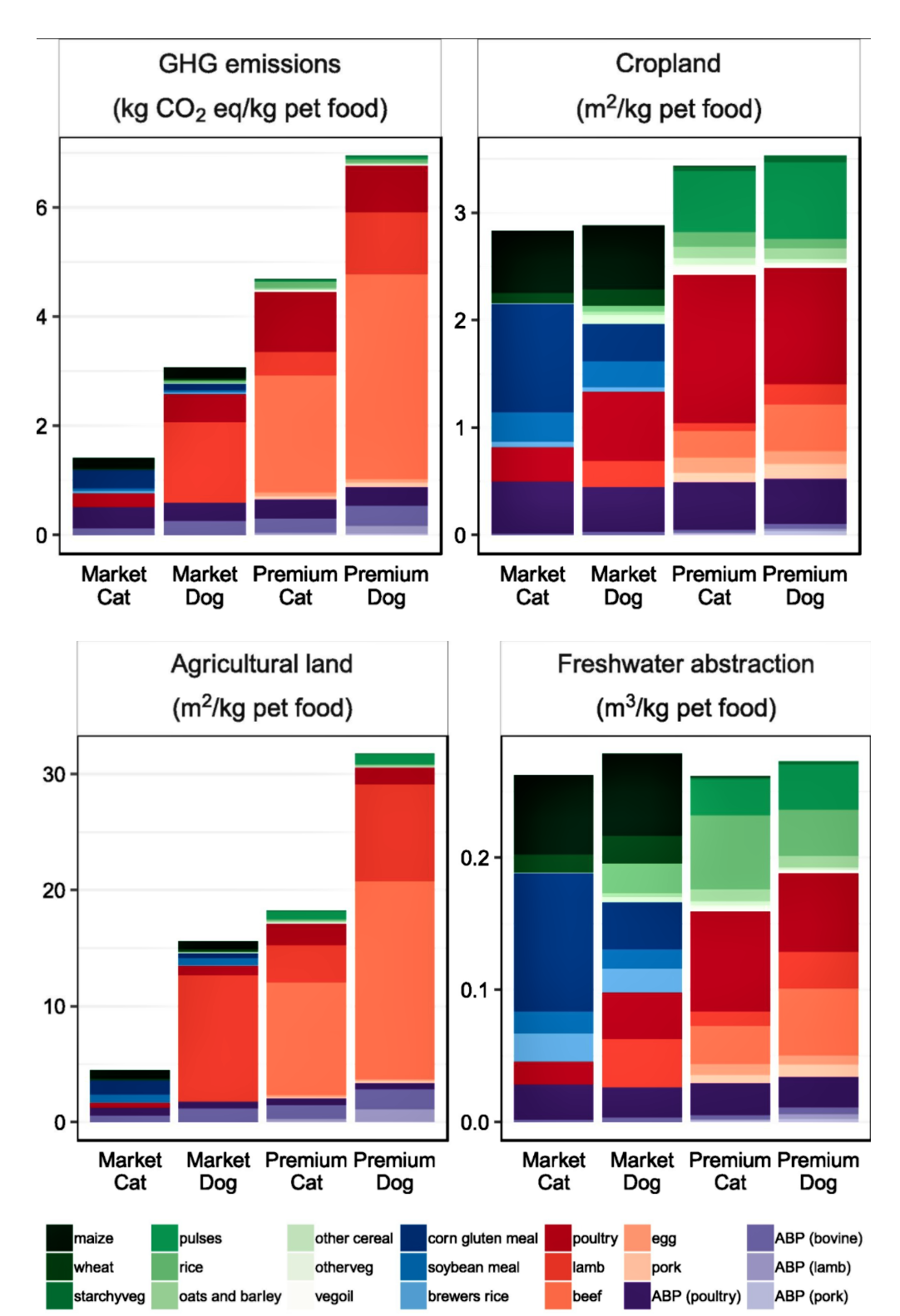Millions of people around the world have sought solace from the pandemic by hugging their companion animals and taking their dogs for a walk (cats are less keen). Animal adoptions have skyrocketed, animal shelters are emptying and re-homing pets is a thing. And while 50% of households globally have a pet, most of us don’t think about the carbon pawprint of their food -- the impact of this huge industry on the planet -- or the possibility that there are more sustainable ways to feed Fido.
The numbers are significant. There are 68 million dogs and 77 million cats in EU countries, while 63 million American households have dogs and 43 million have cats, usually two, and there are 8.2 million dogs and 8.3 million cats occupying two-thirds of Canadian households. The pet food industry is a global giant worth US$90 billion, of which 95% is made up of dog and cat food, and it is expected to grow to US$127 billion by 2027. The US and EU each make up roughly one-third of the global market.
So, how big is the environmental impact of pet food? Various studies have produced a broad range of findings. A 2017 study showed that the impact in the US was 25-30% of the environmental impact of animal production — equivalent to 64 million tons annually of CO2, mostly methane and nitrous oxide, two of the most potent GHGs. This is equal to 13.6 million people driving cars for a year.
A more recent study in the journal Global Environmental Change produced a more conservative estimate. Even so, the global impact of dry pet food production uses 143 million acres (twice the land area of the UK) and has a carbon footprint almost equivalent to the GHG output of the Philippines, a nation of 98 million people. The research scientists from Britain and Germany show that if pet food production was a country, it would rank 60th in the world in terms of GHG emissions.
“Our results demonstrate substantial agricultural land, GHG emissions and water impacts from pet food. The role of pet food is seldom considered in the growing conversation on food production and consumption, and the public awareness of its implications,” the study says.
So why the significant impact? Most pet food is a combination of “animal by-products” (ABPs), some low-grade meats and various grains. ABPs are defined by the United States Department of Agriculture as “hides, skins, fats, bones and edible/inedible offal.”
The study shows that most dry dog food consists of at least 50% ABPs and other animal products, and cat food has an even higher animal content. The growth of premium pet foods, which have a higher proportion of ABP/meat content, have a resulting 2-3x higher environmental impact than the market-leading formulas.
Chart: Global Environmental Change journal.
The prevailing attitude is that ABPs in pet food are an efficient use of by-products from the industrialized factory farm/slaughterhouse food production system in which billions of animals are killed. But this fails to take into account that it ends up further supporting the carbon footprint and environmental damage of our broken food system and supplies even more profits to the meat industry.
Animal by-products “provide a financial return to the livestock industry that incentivizes increased livestock production, with implications for environmental impacts,” the study says.
And this isn’t just about farm animals, it impacts biodiversity. Some premium pet foods contain meat from kangaroos, ostrich, alligators and wild boar, usually designed to treat food allergies in pets.
So, what is the solution to the large and damaging carbon pawprint of pet food? There are sustainable alternatives. Dog food is the most obvious candidate as canines are omnivores who evolved to eat a range of foods. Plant-based dog food with the right level of protein and nutrients can meet the needs of our furry friends and there are many brands catering to this growing market. It also has the most potential to reduce the carbon footprint of pet food because dry dog food occupies 66% of the global market.
Cat food is more problematic. Felines are obligate carnivores that require certain compounds found in meat and not in plants. But there are a few solutions here too including vegan cat foods that contain the protein taurine, which is essential for cats.
More innovative solutions are on the horizon. The study says that insect-based cat and dog foods offer a more sustainable alternative through reduced emissions and less land and water use compared with animal protein-based feeds. And several insect species have greater protein content and digestibility compared with conventional pet food. Crickets, already consumed by millions of people in Asia, are 65% protein (whereas a steak is 35% protein) and have a significantly lower production footprint than animal protein.
Cell-based, lab-grown cultivated meat also offers a potential answer. California company Wild Earth, that already produces a full nutrient plant-based dog food, is also working on growing chicken and fish meat for dogs and cats, from cells grown in a bioreactor. And US start-up Because Animals is working on a cell-based mouse meat as a potential cat food.
Given the growth in pet ownership, especially in Asia where the number of pets has increased 11% in the last three years, and the growth of premium pet foods (now 34% of the US market), the researchers suggest policy options including better carbon labelling and a carbon tax on pet food to encourage consumers to buy pet foods with a lower carbon pawprint.
As more people consider the environmental impact of what they eat, increasingly animal lovers will be able to make more sustainable choices about what we feed our furry friends. However, before making any decisions, we strongly recommend consulting a veterinarian on how best to meet your companion animal’s nutritional needs.




